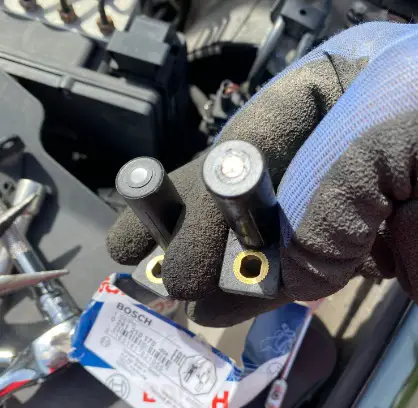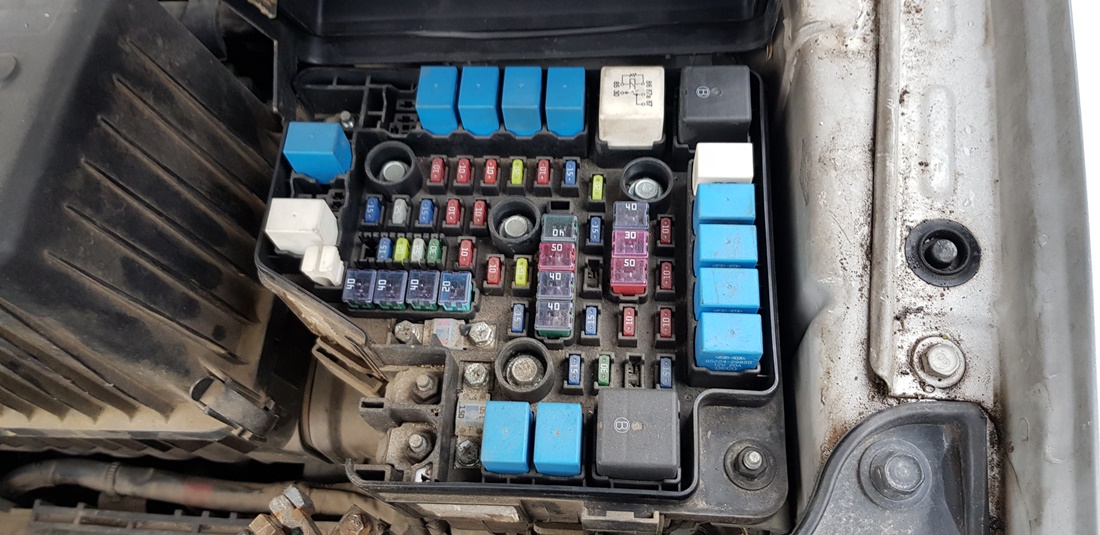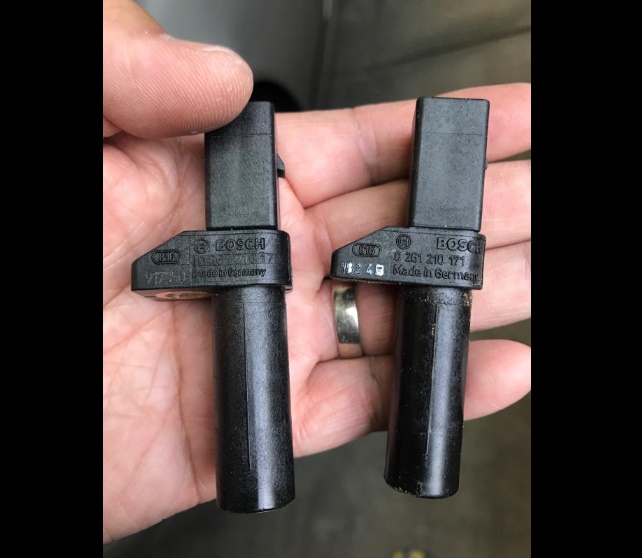Have you ever wondered if there is such a thing as over-waxing your car?
Apparently, there is. Waxing your car helps protect the paint as it creates a layer that acts as a shield.
But, waxing your car too often can create a layer on top of a layer which can cause the car paint to appear hazed.
Key Takeaway
- While waxing a car frequently won’t cause issues, it can be unnecessary and potentially lead to a build-up of wax, giving the car a cloudy or dirty look, and in some cases, if the wax interacts with the paint too much and too often, it could cause clear coat to craze.
- Waxing your car provides a protective layer that helps guard the paint against damage from sun exposure, bird droppings, tree sap, and road grime, while also enhancing the car’s appearance by giving it a shiny, glossy finish.
- You should ideally wax your car every three to four months, or at least twice a year, to maintain the paint’s protection and shine.
- The best time to wax a car is late in the afternoon or in the evening when the temperatures are mild, between 59° to 77°F (15° to 25°C), and there is minimal sunlight, to prevent the wax from drying too quickly.
Can You Wax Your Car Too Much?

Yes, it’s possible to wax your car too much. Applying wax too frequently can lead to build-up that is difficult to remove.
This build-up may create a dull, streaky appearance rather than the glossy finish you might be expecting.
It can also make subsequent wax applications less effective as the new layer of wax cannot adhere properly to the car’s surface.
While waxing offers many benefits such as enhancing the car’s shine and providing a protective barrier against environmental elements, over-waxing can lead to issues.
Waxing too much will eventually cause build-up and clouding. If you are using paste wax on your brand-new car, it will damage the factory clear coat. However, synthetic car wax will not hurt the paint or clear coat, only many layers of synthetic will start to cloud over time.
Typically, it’s recommended to wax your car approximately every three months, or at least twice a year.
Factors such as climate, exposure to sunlight, and how often the car is used can all influence how often you should wax your car. Always follow the manufacturer’s instructions on your chosen car wax product for the best results.
Why You Should Wax Your Car

Waxing your car offers multiple benefits that extend beyond just aesthetic appeal.
1. Protects the Paint: The primary benefit of waxing is that it provides a protective layer over your car’s paint. This can help to shield it from various potential damages like UV rays, rain, snow, dust, dirt, bird droppings, and even minor scratches.
2. Enhances Shine and Gloss: Waxing your car also helps to enhance its shine and gloss. A good wax job can bring out the depth of color in your car’s paint and give it a high-gloss finish, making your car look newer and more polished.
3. Makes Cleaning Easier: A waxed car is easier to clean. The wax provides a smooth surface that prevents dirt and grime from sticking. As a result, when you wash your car, the dirt slides off more easily.
4. Increases Resale Value: Regular waxing can help maintain or even increase your car’s resale value. It shows that the car has been well-maintained, and the paint job is in good condition.
5. Saves Money: While there’s an upfront cost to buying car wax and either time or money spent on applying it, regular waxing can save you money in the long run by reducing the need for more costly repairs, such as repainting.
In conclusion, regular waxing is an essential part of car maintenance that can keep your car looking its best and help protect it from the elements.
Is It Safe To Wash A Car With A Pressure Washer?
How Often Should I Wax My Car

As a general guideline, most experts recommend waxing your car every three months, or at least twice a year. This frequency ensures that your car’s paintwork is consistently protected, which helps to maintain its appearance and potentially extend its lifespan.
In fact, how often you should wax your car depends on several factors, including the type of wax you use, your car’s exposure to the elements, and how frequently you use your vehicle.
1. Type of Wax: Different types of wax have different durability. A general rule of thumb is that traditional carnauba waxes typically last 4-6 weeks, while synthetic paint sealants can last 3-6 months or more. Therefore, if you’re using a carnauba-based wax, you might need to wax more frequently than if you’re using a synthetic one.
2. Exposure to Elements: Your car’s exposure to environmental elements also plays a significant role in determining how often you should wax it. If your car is regularly exposed to harsh weather conditions, strong sunlight, road salt, or heavy pollution, you might need to wax your car more frequently to provide adequate protection for the paintwork.
3. Frequency of Use: The more frequently you use your car, the more likely it is to accumulate dirt, grime, and minor scratches. Regular waxing can help to protect your car from these damages and keep it looking its best says JDPower.
Can I Wax My Car Every Week?

No, waxing your car every week is just an unnecessary expense. It will not do any good to your car paint. Waxing your car can be a great way to make sure that your car looks shiny and new. But if you wax too frequently, there might not be much of a difference, and it could actually start to damage the paint on your car.
You really only need to wax your car every four months or so. Any more often than that is likely unnecessary. For best results, wash the car with a degreaser and clay bar beforehand.
Waxing a car is a great way to keep it looking shiny and new. The wax creates an extra layer of protection for the paint, which prevents dirt, pollen, and other debris from affecting it. Wax can even help protect the car from harsh UV rays that can cause fading and peeling of the paint over time.
Applying wax to your vehicle isn’t difficult; all you need is good quality automotive wax, a clean cloth or microfiber towel, and a bit of elbow grease! Simply apply the wax in circular motions across the painted surface and let it sit for 5-10 minutes before buffing off with a clean microfiber towel.
What Time Of Day Is It Best To Wax a Car?
The best time to wax a car is during the late morning or early afternoon on days that aren’t too sunny. Waxing in direct sunlight can make it harder for the wax to stick, so any mild and cloudy day provides just the right atmosphere for tackling a car waxing job.
For instance, if the temperature outside is between 65-70 degrees Fahrenheit with negligible wind speed, then this is ideal for applying wax without worrying about sun interference.
Waxing your car on a sunny day can be extremely detrimental. The heat of the sun actually causes the wax to harden and bond quickly to the car’s surface, making it difficult to buff away and leaving an unwanted cloudy residue.
Additionally, when looking closely, swirl marks and hazing can be found on the paint due to an uneven application of the wax caused by direct sunlight. Lastly, trying to remove a wax that has hardened too much due to the hot weather can potentially cause damage to the paintwork.
It is therefore highly recommended that you arrange your car waxing exercises on days with cooler temperatures and cloud cover in order to avoid these adverse effects on your car’s appeal.
How To Tell When A Car Needs Waxing

To check if your car needs waxing you need to grab a garden hose and spray down the car. Look at the surface of the vehicle. If there are beads of water all over the surface, it means that the car has been waxed. However, if the water just pools on the surface of the vehicle, your car needs waxing.
Wax is an essential part of any car maintenance routine for a lot of reasons, but one of those is its ability to make water bead. When applied correctly, the protective layer of wax forms an invisible barrier between the paint and moisture, allowing water to roll off instead of settling on the surface. This will not only keep your car from rusting or corroding from too much water damage, but it will also keep your car looking clean and glossy after even a rainstorm.
How To Wax Your Car – Complete Guide

Waxing your car regularly is a must when it comes to protecting your paint finish from the elements, and with the variety of waxes available choosing the right one can be a bit confusing.
Let me walk you through all the steps for waxing your car:
- Wash Your Car First: Start off by washing your car with soap and clean water, do not wash with chemicals. Make sure your car is dry before applying wax. The reason why you need your car to be clean and dry is that wax is not effective on a dirty or wet surface.
- Apply Polish: If your vehicle has that worn-out look because of scratches and faded paint, polish your car before applying wax. This step is important because the polish removes a thin layer of clear coat, and another layer shows up that has more color and is smoother. Just gently rub the polish on your vehicle’s surface with a microfiber cloth and remove it with another microfiber cloth.
- Find The Right Location: It’s important to choose the best location to wax your car. The preferred temperature is 55-85 degrees Fahrenheit. If it’s too hot, the wax li dry fast and it will be harder for you to remove it. If it’s too cold, you will have a hard time applying the wax. It’s best if you wax your vehicle indoors, the garage would be great. If you don’t have a garage, find a spot with shades or wax your car early in the morning or late at night.
- Choosing Wax Product: Waxes that contain carnauba wax are the best, but also the most expensive. If you don’t want to invest a lot of money in your car, you can choose a ‘cleaner’ car wax. With this wax, you will have to skip the polishing part. Avoid using spray waxes because they only last for 2 weeks.
- Foam Applicator: Foam applicators come free when you buy car wax. If you don’t have one, you can use a damp sponge. Take a moment to read the instructions on the wax’s label. Apply a thin layer of wax because it will be easier for you to remove it afterward.
- Wait: Read the instructions from the wax label to see the recommended waiting duration.
- Remove The Wax: Get a microfiber cloth and wipe off the wax in circular motions. Have at least 2 microfiber cloths by your side and change them as needed.
How To Remove Old Car Wax
You are probably wondering why would I want to intentionally remove the wax from the painted car surface, and the answer to that question can vary.
The reason why most people remove the wax is that they are about to polish the car. I am going to show you a safe way to remove your old wax with dish soap. Is it safe? Yes, just make sure you choose a soap that is bleach-free, fragrance-free, and Clorox-free. Just use plain dawn dish soap, if you have it in your household.
To get started, apply the dish soap to a microfiber cloth and wipe the car’s surface. It’s simple as that. But how would you know if you removed your old wax? Here is how to do a test:
Pour water on your wax surface. If the water beads up and runs off very quickly, it means that your surface is still waxed.
Best Car Wax Products 2023
5. Meguilar’s Quik Wax
- Helps minimize water spots
- Won’t damage or stain dark trim
- Safe to use in sunlight
4. Meguiar’s Mirror Glaze
- Foam and cloth applicators
- Good for extremely deep colors
- One of the most expensive options
3. Super Hard Shell Finish
- Applied directly to existing coats
- Has a tropical and creamy aroma
- Works best on slightly damp surfaces
2. Ultimate Liquid Wax
- Looks great when applied by hand
- Won’t damage the surrounding trim
- A common choice of professionals
1. Top Coat F11 Polish
- Provides a deep-looking shine
- Effective long-term water beading
- Maintains showroom-quality finishes
DIY: How To Make Your Own Car Wax
If you don’t want to spend money on car wax, you can make your own wax. Also, some ingredients found in commercial wax products are not ”people-friendly”. You don’t need a degree in chemistry to do this. I have done the research and found a way to create a perfectly safe, chemical-free wax that will do the job as any other wax.
To start off, you will need:
- 4 OZ Jar
- Double boiler
- 5 Tbsp Coconut Oil
- 4 Tbsp Carnauba Wax
- 2 Tbsp Beeswax
- 7,5 Tbsp White Vinegar
- 50-60 Drops of Essential Oils
Preparation:
Please follow my exact instructions. Adding some ingredients before or after will mess up the whole mixture.
- First, add the coconut oil and vinegar to the jar.
- Place the jar into a pot with simmering water.
- Wait until this mixture is warm.
- Add the carnauba wax and beeswax.
- Stir the mixture.
- Remove the jar after the mixture is melted and swirl around for 1 minute.
- Let it cool down.
- Add the essential oils and swirl again.
- Pour the mixture into the jar and let it set.
To use the wax you will need a clean microfiber cloth. Apply the wax on the car’s surface and spread it with circular motions. Let it sit for 10 minutes and then wax off with a clean microfiber cloth.
Hand Waxing VS Machine Waxing
Machine Waxing – Using a machine to wax your car will obviously save you a lot of time. You can easily break down and diminish the wax.
The 10FX is my favorite because it gets in the small intricate areas. You can switch between the 3,5 and 6” backing plates without changing counterweights, so it makes it versatile on any size or shape vehicle. So, if you don’t want to waste your day waxing your car, or you are doing professional car detailing, machine waxing is best for you.
Hand Waxing – If you don’t have access to a waxing machine, you can wax your car by hand. This is the slower and harder way. It will take a long time, friction, and pressure to break down and diminish the wax. You can use hand application for smaller, more intricate areas like under door handles, and small bumpers.
In the end, you will get the same result. The difference is that you will finish 10 times faster with a machine. Also, there is a good chance you will quit waxing due to tiredness if you do it by hand.
I hope this article will answer all the questions that you have about waxing your car. If not, please feel free to comment below.
FAQs
Q: What are the benefits of waxing your car?
A: Waxing your car provides several benefits. It helps to protect the paint from UV rays, fading, and oxidation. It also provides a protective barrier against dirt, dust, and other contaminants.
Q: Can waxing your car improve its resale value?
A: Yes, regular waxing can help maintain your car’s paintwork in good condition, which can potentially increase its resale value. A well-maintained exterior is often more appealing to potential buyers.
Q: Is it okay to use any type of car wax?
A: It is important to use a wax specifically designed for automotive use. Different types of car waxes have different formulations and properties, and using the wrong type may not provide the desired results.
Q: What is the best way to apply car wax?
A: The best way to apply car wax is to start with a clean and dry surface. Use a foam applicator pad or a microfiber cloth to apply a thin and even layer of wax in circular motions. Follow the instructions on the product for best results.
Q: Can waxing your car remove scratches?
A: Waxing can potentially minimize the appearance of minor scratches by filling them in temporarily. However, deep or severe scratches may require specialized repair techniques.
Q: Can waxing your car protect it from rust?
A: While waxing can provide a protective barrier against dirt and contaminants, it is not a foolproof method to prevent rust. Proper maintenance and regular checks for any signs of rust are still necessary.
Q: Is it necessary to remove old wax before applying a new coat?
A: It is recommended to remove old wax before applying a new coat. This helps to ensure better adhesion and longevity of the new wax. Use a wax remover or a clay bar to effectively remove old wax residues.
Q: Can waxing your car damage the paint?
A: When done correctly, waxing your car should not damage the paint. However, improper techniques such as using abrasive products or applying too much pressure can potentially cause scratches or swirl marks.
In Conclusion
Waxing your car provides a layer of protection for the paintwork and enhances its appearance.
However, while regular waxing is beneficial, it’s possible to wax your car too much.
Overwaxing can lead to a build-up that creates a dull or streaky finish and may potentially damage the clear coat.
Balancing the frequency and amount of wax application is key to maintaining your car’s shine and health. Always follow the manufacturer’s instructions and remember that the quality of the application often trumps quantity.




